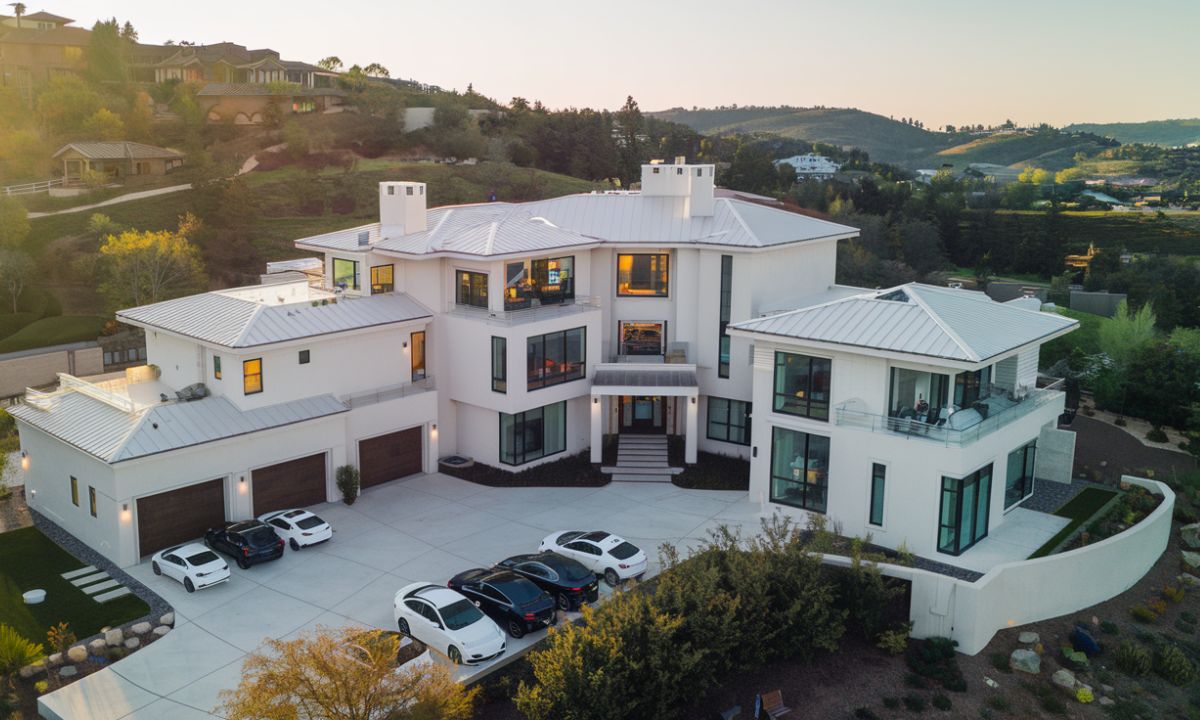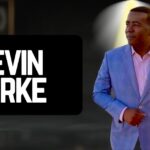When you picture where the world’s wealthiest tech visionary might live, you probably imagine sprawling mansions with infinity pools and helicopter pads. For years, that image would’ve been accurate for Elon Musk.
But in a twist that perfectly captures the Tesla and SpaceX CEO’s unpredictable nature, Musk has dramatically downsized from a multi-million dollar real estate portfolio to a prefabricated tiny house that costs less than a Tesla Model S.
This radical shift raises fascinating questions: Why would someone worth over $200 billion choose to live in a home smaller than most executives’ offices? How does this billionaire’s housing journey reflect his complex personality and evolving priorities? And what can we learn from the SpaceX founder’s unconventional approach to luxury and minimalism?
Let’s explore the surprising story behind Elon Musk’s house, from his former Bel Air mansions to his current tiny home in Texas, and discover what these choices reveal about one of the world’s most influential innovators.
A Journey Through Elon Musk’s Real Estate
Elon Musk’s relationship with real estate has evolved dramatically over the past decade, reflecting his changing priorities and philosophy.
The Mansion Era (2012-2020)
Between 2012-2020, the SpaceX CEO amassed an impressive portfolio of luxury homes, primarily in Los Angeles’ exclusive Bel Air neighborhood. At the peak of his property ownership, Musk controlled seven mansions worth approximately $100 million.
| Year | Property | Purchase Price | Size | Notable Features |
| 2012 | Bel Air Primary Residence | $17 million | 16,251 sq ft | 7 bedrooms, 13 bathrooms, tennis court, pool |
| 2013 | Ranch House | $6.75 million | 2,756 sq ft | Formerly owned by Gene Wilder |
| 2015 | Colonial House | $4.3 million | 3,943 sq ft | 4 bedrooms, overlooking Bel Air Country Club |
| 2016 | Contemporary Mansion | $20 million | 7,026 sq ft | Floor-to-ceiling windows, ocean views |
| 2017 | Fifth Bel Air Property | $24.25 million | 9,309 sq ft | Unfinished project home |
| 2019 | Hillsborough Estate | $23.4 million | 16,000 sq ft | 16 acres in Northern California |
The Great Sell-Off (2020)
In May 2020, Musk shocked the California real estate market with a Twitter announcement that upended his relationship with physical possessions: “I am selling almost all physical possessions. Will own no house.”
True to his word, within 18 months, he had sold his entire California real estate portfolio for approximately $144 million. The Tesla CEO explained his decision: “I think possessions kind of weigh you down. They’re kind of an attack vector, you know? People say, ‘Hey, billionaire, you’ve got all this stuff.’ Well, now I don’t have stuff. Now what are you going to do?”
“Don’t spend your money on a house, spend it on the rockets.” – Elon Musk on priorities, 2021
This dramatic sell-off coincided with Musk’s increased focus on SpaceX’s Starship development in Texas and his public disagreements with California’s COVID-19 policies and tax rates.
Current Residence: The Tiny House in Texas
After divesting his mansion portfolio, Elon Musk made headlines again with his surprising choice of primary residence: a prefabricated tiny home in Boca Chica, Texas, near SpaceX’s Starbase facility.
Location Details:
- Area: Boca Chica Village, Cameron County, Texas
- Proximity: Walking distance to SpaceX’s Starship development and launch facility
- Environment: Remote coastal area near the Mexican border
- Local community: Sparsely populated area largely bought out by SpaceX
The SpaceX CEO’s current home is reportedly a Boxabl Casita—a prefabricated, foldable house that costs approximately $50,000. At just 400 square feet, Musk’s tiny house would fit inside his former Bel Air mansion’s living room over 40 times.
![Boxabl Casita Tiny House Model similar to Elon Musk’s residence]
Why Texas?
Musk’s move to Texas aligns with several strategic advantages:
- Business operations – Direct oversight of SpaceX’s Starship development
- Tax benefits – Texas has no state income tax, unlike California’s 13.3% top rate
- Regulatory environment – Less restrictive business regulations
- Space for innovation – Remote location allows for experimental rocket testing
- Statement of principles – Demonstrates commitment to minimalism and focus
In a 2021 interview, Musk explained: “My primary home is literally a ~$50k house in Boca Chica / Starbase that I rent from SpaceX. It’s kinda awesome though. Only house I own is the events house in the Bay Area.”
Key Features of the Tiny House
Despite its modest size, Elon Musk’s tiny house incorporates several innovative features that reflect both practicality and the tech visionary’s forward-thinking approach to living spaces.
The Boxabl Casita Specifications:
- Size: 20′ x 20′ (400 square feet)
- Layout: Studio-style with distinct living areas
- Construction: Prefabricated, delivered folded and set up in under a day
- Materials: Steel, concrete, and EPS foam for durability and energy efficiency
- Transport: Can be towed by a Tesla Model X (fitting for the Tesla CEO)
The tiny home includes:
- Kitchen area with full-sized appliances and counter space
- Bathroom with shower, toilet, and sink
- Living room with space for entertainment and work
- Bedroom area that can be partitioned for privacy
- High ceilings (9’6″) to create sense of spaciousness
- Large windows for natural light
While modest by billionaire standards, the house incorporates smart home technology that allows Musk to control lighting, temperature, security, and entertainment systems remotely—likely using the same technology developed for Tesla’s smart home integration.
Sustainability features include:
- Highly efficient insulation (R-30 roof, R-20 walls)
- Energy-efficient windows and doors
- Low-flow water fixtures
- Potential for solar panel integration
- Minimal environmental footprint
For the world’s richest man, this living arrangement represents a radical departure from luxury living. The contrast between building massive rockets designed to colonize Mars and living in a home smaller than many apartments perfectly encapsulates Musk’s complex personality—simultaneously ambitious on a cosmic scale yet increasingly minimalist in personal matters.
Previous Properties: A Look at Musk’s Mansion Portfolio
Before embracing minimalist living, Elon Musk assembled an impressive collection of luxury homes that reflected his earlier approach to wealth and status. His California real estate portfolio was centered primarily in Bel Air, one of Los Angeles’ most exclusive neighborhoods.
Total Portfolio Value: Approximately $100 million at its peak Number of Properties: Seven major residences Location Concentration: Six properties in Bel Air, one in Hillsborough (Northern California)
Musk’s approach to luxury living during this period involved purchasing adjacent properties to create a compound-like arrangement that maximized privacy and security for his family—a common strategy among high-profile celebrities and executives in the luxury home market.
The Bel Air Mansion
The crown jewel of Musk’s former real estate holdings was his primary Bel Air residence, an expansive mansion that epitomized luxury California real estate.
Property Details:
- Purchase: Bought in 2012 for $17 million
- Size: 16,251 square feet
- Lot: 1.7 acres
- Style: Contemporary Mediterranean
- Sale: Sold in June 2020 for $29 million to Chinese billionaire William Ding
This magnificent estate featured:
- 7 bedrooms and 13 bathrooms
- Two-story library with extensive bookshelves
- Home theater with professional-grade audio
- Wine cellar with climate control
- Tennis court with night lighting
- Multi-car garage for Musk’s vehicle collection
- Swimming pool and spa with ocean views
- Full outdoor kitchen and entertainment area
- State-of-the-art security systems
The mansion’s hillside location provided sweeping views of Los Angeles and the Pacific Ocean, with the property situated to maximize both privacy and vistas. According to former visitors, the interior featured high ceilings, expansive windows, and an open floor plan that created a seamless flow between indoor and outdoor spaces—hallmarks of luxury homes in Southern California.
The Historic ‘Twin Palms’ Estate
Among Musk’s most character-filled properties was the historic Bel Air ranch house formerly owned by comedy legend Gene Wilder. Musk purchased this California real estate gem in 2013 for $6.75 million.
Property Highlights:
- Historical significance: Built in 1951 and home to Gene Wilder for over 30 years
- Architecture: Classic California ranch style with mid-century modern elements
- Size: 2,756 square feet on a 0.78-acre lot
- Location: Overlooks the 13th green of Bel Air Country Club
What made this property special was Musk’s sentimental attachment to it. After purchasing the home, he preserved many original features to maintain its character and history. In a unique arrangement, Musk later sold this property to Wilder’s nephew with specific provisions that the house’s exterior couldn’t be significantly altered—preserving the legacy of the “Willy Wonka” actor’s former home.
“Just one stipulation on sale: I own Gene Wilder’s old house. It cannot be torn down or lose any of its soul.” – Elon Musk on selling the Twin Palms estate
This property demonstrated a more nostalgic side to Musk’s real estate decisions, showing that even as he assembled a portfolio of luxury homes, some purchases were driven by sentiment rather than just status or investment potential.
Musk’s Family: A Peek into His Personal Life
Elon Musk’s housing choices have been significantly influenced by his family considerations, balancing the demands of his high-profile career with the needs of his children. While the SpaceX CEO maintains considerable privacy regarding his family life, his real estate decisions offer glimpses into his approach to parenting and family values.
During his mansion era, Musk’s large California properties provided ample space for his growing family. The Bel Air compound with multiple adjacent homes created a secure environment where his children could visit and stay with maximum privacy and security—critical concerns for one of the world’s most recognizable billionaires.
Family considerations in Musk’s housing:
- Security: Gated properties with advanced security systems protected his family from unwanted attention
- Privacy: Remote locations and strategic property layouts minimized exposure
- Education access: Proximity to quality educational institutions
- Recreational space: Swimming pools, game rooms, and outdoor areas for family activities
- Guest accommodations: Space for extended family, nannies, and support staff
His transition to a tiny house in Texas raises interesting questions about accommodations during family visits. While specific details aren’t public, possibilities include:
- Temporary expansions of his living space during visits
- Nearby accommodations owned or rented specifically for family stays
- Scheduled visits to other properties he maintains access to
- Creative use of SpaceX facilities for family gatherings
A Brief Overview of Musk’s Children
The billionaire’s family structure has evolved significantly over the years, presenting unique housing challenges for a tech visionary balancing revolutionary business ventures with fatherhood.
Musk is father to multiple children from different relationships:
- With former wife Justine Wilson: Five surviving sons (twins and triplets)
- With singer Grimes: Two children
- With Shivon Zilis: Twins
- Total: Nine children as of current public information
While Musk’s children primarily live with their respective mothers, his housing arrangements must accommodate visitation schedules and provide appropriate spaces for children of various ages. This complex family structure likely influenced both his earlier mansion purchases (providing ample space) and his current minimalist approach (focusing on quality time rather than elaborate surroundings).
Impact of fatherhood on housing decisions:
- During his California years, multiple bedrooms and recreational facilities accommodated family visits
- His current minimalist approach suggests a shift toward experiencing life and activities together rather than accumulating possessions
- Privacy considerations remain paramount, with his Texas location providing natural isolation from paparazzi and public attention
Elon Musk’s Net Worth: A Reflection of His Success
Elon Musk’s housing choices become even more fascinating when contrasted with his extraordinary wealth. As of early 2025, Musk’s net worth fluctuates around $200-250 billion, making him one of the wealthiest individuals in modern history.
Key components of Musk’s wealth:
| Source | Approximate Value | Ownership Stake |
| Tesla | $100-150 billion | ~13% |
| SpaceX | $40-60 billion | ~47% |
| X (formerly Twitter) | $10-15 billion | Majority owner |
| Neuralink | $5-8 billion | Significant stake |
| The Boring Company | $3-5 billion | Majority stake |
| Other investments | $10-20 billion | Various |
What’s remarkable is that at the height of his property ownership, Musk’s entire real estate portfolio ($100 million) represented less than 0.05% of his current net worth—equivalent to someone worth $1 million owning $500 in furniture.
Comparison to other tech billionaires:
- Jeff Bezos: Owns multiple luxury properties worth $500+ million combined, including a $165 million Beverly Hills estate
- Bill Gates: Primary $127 million compound in Medina, Washington spans 66,000 square feet
- Mark Zuckerberg: Owns a $59 million Lake Tahoe compound plus several other properties
- Larry Ellison: Owns 98% of the Hawaiian island of Lanai purchased for $300 million
Musk’s decision to live in a $50,000 tiny house while commanding resources that could purchase entire islands represents one of the most striking disconnects between wealth and material possessions among modern billionaires.
How His Wealth Influences His Lifestyle
Despite his enormous wealth, Elon Musk has increasingly embraced a lifestyle that prioritizes purpose over possessions, work over luxury, and innovation over comfort—a philosophy reflected in his housing decisions.
Notable aspects of Musk’s lifestyle despite his billionaire status:
- Work schedule: Reportedly works 80-100 hours weekly, often sleeping at Tesla or SpaceX facilities
- Transportation: While he owns various Tesla models, he’s known for relatively modest personal transportation compared to other billionaires
- Personal possessions: Following his “own no house” declaration, he claims to have minimal personal possessions
- Luxury spending: Limited reports of extravagant personal purchases beyond his previous homes
- Daily routine: Described as intensely focused on work with limited leisure time
“I don’t have a home, I don’t have clothes, I don’t have stuff… I mean, technically that’s true, but I think the reason is not because of, like, some Gandhi-like virtue; it’s really just that I have tons of work and I’m sleeping in the factories.” – Elon Musk, 2022
The SpaceX CEO appears to direct his resources primarily toward his companies and their missions rather than personal luxury. This approach aligns with his stated goal of making humanity multiplanetary—a mission he views as worth sacrificing personal comfort to achieve.
The Impact of Elon Musk’s Real Estate Choices
Musk’s dramatic real estate decisions—particularly his 2020 property sell-off and move to a tiny house—have had ripple effects beyond his personal life, influencing markets, public perception, and even housing trends.
Market Impact:
When the SpaceX founder announced his intentions to sell his California real estate portfolio, it created significant attention in luxury home markets. His Bel Air mansion sales, totaling nearly $62 million in just a few months, represented major transactions in an already exclusive market.
The luxury homes Musk sold have followed different trajectories:
- His main Bel Air mansion, purchased for $17 million and sold for $29 million, has reportedly increased further in value
- The Gene Wilder house, sold with restrictions on maintaining its character, has preserved a piece of Hollywood history
- Several properties were purchased by developer Ardie Tavangarian, who combined them into a single ultra-luxury estate
Influence on the Prefab Home Industry:
Perhaps the most surprising impact came in the prefabricated housing sector. After reports emerged about Musk living in a Boxabl Casita:
- Boxabl reported a waitlist growing to over 100,000 interested customers
- Investment in the company increased significantly
- Media coverage of prefabricated sustainable housing expanded
- Public interest in tiny homes and minimalist living surged
Public Perception:
Musk’s housing decisions have contributed to his complex public image:
- Supporters view his downsizing as evidence of commitment to his companies’ missions
- Critics suggest the move might be primarily tax-motivated or publicity-driven
- Media coverage often presents it as either admirable minimalism or eccentric billionaire behavior
Regardless of interpretation, Musk’s housing journey has sparked conversations about the relationship between wealth, possessions, and purpose—particularly relevant in a society increasingly questioning traditional markers of success.
Lessons in Minimalism and Sustainability
Elon Musk’s transition from a multi-mansion portfolio to a tiny prefabricated home offers intriguing insights into minimalism and sustainability that align with broader societal shifts toward more conscious consumption.
Environmental Impact of Downsizing:
The environmental footprint comparison between Musk’s former mansions and his current tiny house is striking:
| Factor | Bel Air Mansion | Tiny House | Reduction |
| Square footage | 16,251 sq ft | 400 sq ft | 98% |
| Energy consumption | Estimated 15-20x higher | Baseline | 93-95% |
| Water usage | Multiple bathrooms, pool, landscaping | Single bathroom, minimal landscaping | 90%+ |
| Construction materials | Thousands of tons | Under 10 tons | 99% |
| Land use | 1.7 acres (primary mansion only) | Minimal footprint | 99%+ |
This dramatic reduction aligns with Musk’s professional focus on sustainability through Tesla’s electric vehicles and solar products, creating consistency between his personal choices and public mission.
Key Sustainability Features of Tiny House Living:
- Reduced energy needs – Smaller spaces require less heating, cooling, and lighting
- Lower resource consumption – Fewer materials needed for construction and maintenance
- Minimized waste – Less space for accumulating unnecessary possessions
- Efficient design – Prefab construction optimizes material usage and reduces waste
- Land conservation – Smaller footprint preserves natural spaces
Practical Minimalism Lessons from Musk’s Approach:
- Focus on necessities – Eliminating excess possessions to concentrate on what truly matters
- Quality over quantity – Investing in fewer, better items rather than accumulating many
- Time optimization – Less maintenance and cleaning of physical spaces
- Mental clarity – Reduced “attack vectors” and distractions
- Alignment with values – Housing that reflects personal priorities rather than status expectations
“Actually, I don’t really like having possessions, or stuff. It just weighs you down. I feel a little bit trapped by all that stuff.” – Elon Musk on simplifying his lifestyle
For average homeowners inspired by Musk’s example, practical takeaways might include:
- Questioning whether larger homes truly improve quality of life
- Considering how housing choices align with environmental values
- Evaluating the true cost of maintenance, utilities, and upkeep of larger spaces
- Exploring whether downsizing could free resources for more meaningful pursuits
A Reflection of Personal Growth
Elon Musk’s evolution from mansion collector to tiny house dweller reflects a fascinating personal journey that parallels his professional development and changing life philosophy.
The Psychological Arc:
- Acquisition Phase (2012-2019): Early success led to traditional status symbols
- Questioning Period (2019-2020): Growing dissatisfaction with possessions despite increasing wealth
- Divestment Decision (2020): Public commitment to sell almost everything
- Minimalist Experiment (2020-Present): Testing whether less truly can be more
This transformation suggests a maturing relationship with success and wealth, where traditional luxury has been increasingly replaced by freedom, focus, and alignment with larger goals.
Musk has spoken about the psychological benefits of his minimalist turn:
- Reduced mental load – Fewer possessions requiring attention and maintenance
- Enhanced focus – Fewer distractions from primary missions and goals
- Increased mobility – Greater flexibility to relocate as business needs demand
- Symbolic alignment – Living arrangements that better reflect stated priorities
- Freedom from expectations – Liberation from traditional billionaire lifestyle pressures
“Possessions kind of weigh you down… They’re an attack vector. People say, ‘Hey billionaire, you’ve got all this stuff.’ Well, now I don’t have stuff.” – Elon Musk
This journey mirrors broader life lessons about the relationship between material possessions and happiness—lessons that resonate regardless of wealth level. For Musk, the transition appears connected to his increasing focus on legacy-defining missions like sustainable energy and Mars colonization, suggesting a shift from accumulation to purpose as his wealth grew.
Conclusion: A Man of Many Facets
Elon Musk’s housing journey from luxury mansions to a prefabricated tiny house encapsulates the contradictions and complexities that make him such a fascinating figure. The SpaceX CEO’s evolving relationship with physical possessions offers a unique window into his priorities, values, and personal development.
Key Contradictions in Musk’s Housing Choices:
- A man who builds spacecraft to colonize other planets now lives in a home smaller than many apartments
- The world’s richest individual chooses accommodations more modest than many middle-class Americans
- A business leader who creates luxury vehicles (Tesla) embraces extreme personal minimalism
- Someone with nearly unlimited resources voluntarily constrains his living space
These apparent contradictions actually form a coherent pattern when viewed through the lens of Musk’s stated priorities: advancing sustainable energy, making humanity multiplanetary, and focusing intensely on work that he believes matters for civilization’s future.
His current tiny house in Texas symbolizes several core aspects of his character:
- Pragmatism – Living near work to maximize productivity
- Commitment – Physical demonstration of stated values
- Contrarianism – Willingness to defy expectations
- Adaptability – Comfort with dramatic life changes
- Focus – Elimination of distractions from primary goals
Final Thoughts
As we look to the future, Elon Musk’s housing situation remains an evolving story that will likely continue to reflect his unique approach to life and work. Whether his tiny house represents a permanent lifestyle shift or a temporary experiment remains to be seen.
Several factors may influence his future housing decisions:
- Family needs as his children grow and visit
- Business relocations as SpaceX and Tesla evolve
- Personal philosophy as his thinking about possessions develops
- Practical considerations as he balances work demands with living conditions
What’s certain is that Musk’s unconventional approach to billionaire living has challenged traditional associations between wealth and possessions, inspiring conversations about what truly constitutes luxury in the modern era.
For a man focused on transforming multiple industries and potentially making humanity an interplanetary species, perhaps the true luxury isn’t found in mansion square footage or architectural opulence, but in the freedom to pursue ambitious goals unencumbered by possessions—a perspective that makes his tiny house not a downgrade, but an upgrade aligned with his highest priorities.










